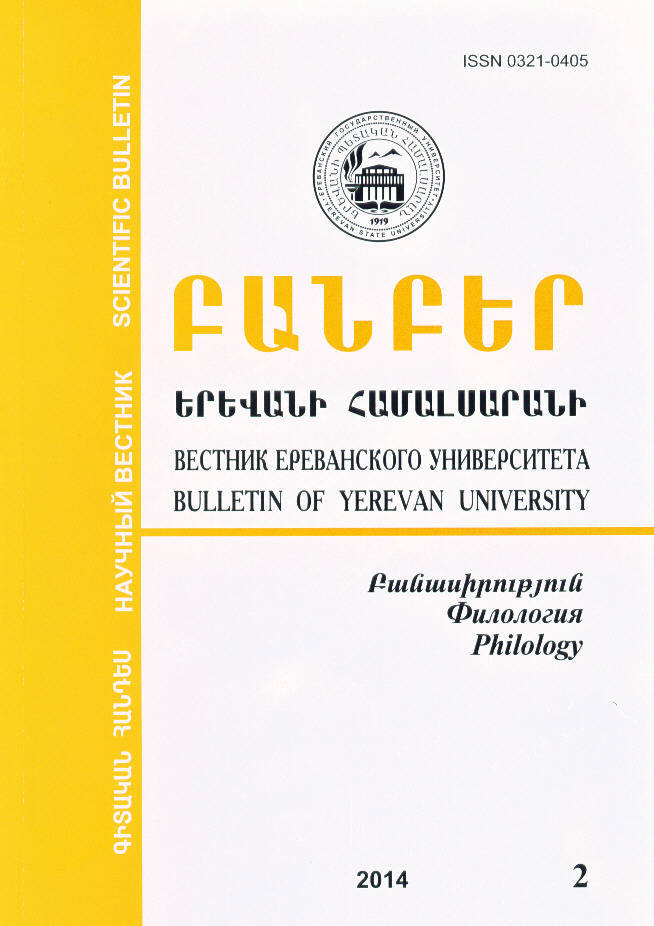Laryngeal Behaviour of Obstruents in Armenian: Aspiration and Syllable Boundaries
DOI:
https://doi.org/10.46991/BYSU:B/2014.5.2.068Keywords:
phonology, phonetics, prosody, laryngeal behaviour, obstruents, segmental status, aspiration, iambic foot, Paradigm Uniformity, three-way phonation systemAbstract
Armenian is a language with three-way phonation types. As a result, the language comes out with vast morphological contrasts. In their efforts to maintain the relevant contrasts and reduce the chances of miscommunication to a minimum, native speakers of Armenian employ certain phonological and phonetic mechanisms, viz. [voice] is licensed utterance-finally as well as final environments are enhanced by adding [+spread glottis] feature to obstruents. Prosodically, fortition is motivated as an edge-marker of morpheme boundaries and syllable-initial positions. Any sound changes (through aspiration) at Word Level are uniformly extended to other levels of derivation, showing Paradigm Uniformity effects. O1O2 contexts undergo regressive assimilation. Both ‘voiced’ and ‘voiceless’ assimilation is reported in Armenian. In this paper laryngeal facts have been analysed in terms of the two main licensing approaches: Licensing by Cues and Licensing by Prosody. With this in view, laryngeal realities in Armenian might offer fertile ground for further thorough research.
Downloads
Published
How to Cite
Issue
Section
License
Copyright (c) 2021 Bulletin of Yerevan University

This work is licensed under a Creative Commons Attribution-NonCommercial 4.0 International License.

